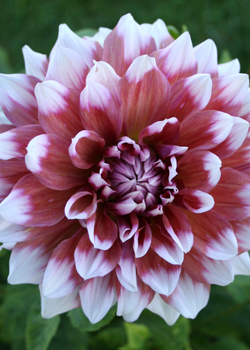Dahlias Information

Nothing could be more showy and vibrant in the late summer garden than the Dahlia. Coming in all sorts of shapes and sizes, these flowers are unmatched in stature, color, and often size. From the large blooms of the dinnerplates to the petite tightly-packed petals of the pompons, these flowers will continue to adorn the garden into the early fall. They range in height from 16-42" tall making them ideal for a variety of situations.
Depending on the variety, Dahlia tubers are useful as a garden bed backdrop, a container focal point, or in a landscape border. They also do well in containers.
Plant Information
- Planting Time: Spring
- Bloom Time: Summer - Fall
- Hardiness Zone: 8-10
- Suitable Zone: 4-10
- Light Needs: Partial - Full Sun
Planting Dahlias
- Dahlia tubers are typically planted during the spring season.
- Choose a planting location that has well-drained soil and receives at least a half day of sunlight. The more sun a dahlia tuber receives, the more blooms it will produce.
- Depending on the variety, space the tubers anywhere from 12-36" (be sure to refer to the specific planting requirements for that variety). If planting in a container, consider placing a few tubers in the center for a focal point.
- When planting dahlias, you will want to be sure that the tubers (the finger-like storage organs that resemble small, under-developed potatoes) are hanging downward. The point where these tubers join is where the plant stem will emerge. Sometimes a small shoot can already be seen at this point poking through the flesh of the tuber. This point should be located just as or below the soil surface with the "fingers" buried below.
- Thoroughly soak the area with water once the tubers have been planted. Continue to water throughout the growing season, being careful not to provide too much moisture. Fertilize plants once per month if desired with a well-balanced water soluble fertilizer while actively growing.
- Remove finished blooms to maintain a clean appearance and encourage reblooming. To create fuller, more bushy plants, pinch back the center stem just above the third set of leaves. This shoot can then be rooted if desired. For larger blooms, pinch back all side buds only allowing the center one to remain.
- Allow plants to continue growing until just before or just after the first frost. This enables them to produce food for next year's growth. If planted in containers, force the bulbs into dormancy by gradually withholding water.
- Once the foliage is slightly damaged by frost, gently dig them up. Cut the flower stalk within 6" of the tuber and gently rinse off the soil. Allow the tubers to air dry for at least one full day. Place tubers in a dry cardboard box or pot lined with a paper bag or newspaper and cover with a light, moist layer of sawdust or peatmoss.
- Store the tubers for winter in a dry place which remains consisting below 55 degrees but does not freeze, such as a cellar, basement, or garage. Check them monthly for signs of rot or shriveling. If tubers begin to shrivel, mist the peatmoss lightly with water.
- Replant in spring according to the above instructions.